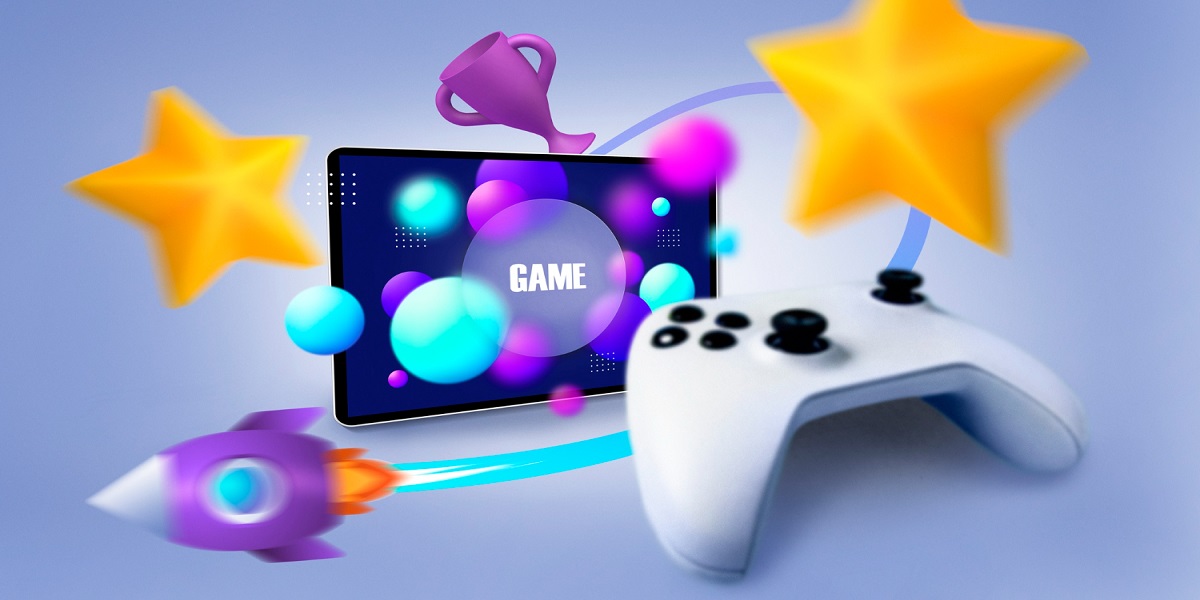
Top 10 Innovations in Game App Development
- By Maddox Apollo
- 18-12-2023
- Mobile App Development
Playing games, whether on mobile phones or any gaming consoles, we see no age limit when it comes to gamers. From video games to mobile applications, game enthusiasts are experiencing a major transformation. And that’s all because of the continuous development and introduction of new technologies in game app development.
Thus, thanks to this advancement, the gaming experience is now becoming more exciting and interesting than ever before. Also, helping the players in accordance with their changing needs.
Another reason is the introduction and increasing usage of smartphones and tablets, making mobile game apps as a game-changer in this industry. It is alternating how we play and interact with the gaming world.
Understanding The Evolution of Game App Development
If you are gaming enthusiastic and have always loved playing games since always, then it may be fascinating how the gaming industry is going through a roller coaster of evaluation. From designing to coding and testing, this industry is looking for new ways, where creativity can meet the technology.
The game app development industry is now focusing more on bringing life interactive experiences to meet the requirement that captivate players from all over the world. Although game app development has come a long way, from simple arcade games to playing video games on PlayStation or Xbox, the evolution of game app development is nothing short of extraordinary.
So, whether you are just a gamer, or a game developer, the advancement of game apps has pushed all the boundaries of what’s possible and is constantly looking for innovative ways to deliver bigger, better, and more immersive experiences.
Top 10 Innovations to Look for In-Game App Development
1. Virtual Reality (VR) Integration in Gaming Apps
From just dreaming about playing our favorite games with reality experience, to actually experiencing the gaming experience with Virtual Reality, we all see the revolution in the gaming world. The introduction of VR in this industry has completely changed the way we play and enjoy games.
This technology enables the players to enter a whole new world by immersing themselves in the game’s environment. This innovation has made gaming more accessible as well as comfortable. From sleeker headsets to easy-to-use motion controllers, these devices of VR gaming are making the connection between virtual games and the actual world.
2. Augmented Reality (AR) Advancement In-Game App Development
It is another intervention that focuses on erasing the wall between the actual world and gaming. Augmented reality is opening up new possibilities, like magic for game app developers. In games like Jurassic World Alive or Alien Invasion, with the help of AR, it is way easier to blend the virtual objects with the real world.
Not only does AR enhance the gaming experience, but also assists in creating a sense of wonder in our everyday lives. By carefully maintaining the balance between the real world and the game, AR is implemented into game development.
Game developers are constantly exploring new ways to create captivating experiences for the players, whether they are marker-based AR games that rely on specific images or locational-based AR games that use GPS.
3. Artificial Intelligence (AI) And Machine Learning (ML) In Gaming Apps
The introduction of technologies like Artificial Intelligence and Machine Learning has evolved in almost every industry and game app development is no exception. As they have become an indispensable tool in gaming app development, these innovations are mainly focusing on bringing the virtual world to life, by creating challenging, non-player characters.
Moreover, these technologies are creating dynamic environments, and making the game respond intelligently to player actions. So, it is safe to say that thanks to AI, game app developers can create smarter and more realistic opponents, making gameplay a thrilling challenge.
4. Multiplayer Functionality and Online Gaming Features
From the days of arcade games, we all love to play games with our friends, right? But as we are moving more and more toward online gaming, the game development industry has taken a great leap with the inclusion of multiplayer functionality. It is basically enabling players to connect and compete with friends or other competitors from around the world.
So, whether you want to team up with friends to take down formidable foes or engage in intense online battles, the multiplayer feature adds an entirely new dimension to gaming. Moreover, these systems connect players instantly, pairing them up with opponents of similar skill levels or interests. With real-time online gaming, you'll always have a worthy adversary just a few clicks away.
5. Cross-Platform Compatibility And Seamless User Experience
Just like any app development process, the game app developers now prioritize cross-platform compatibility, ensuring their games can be enjoyed on various devices and operating systems. They are erasing the difference, whether you're a die-hard iOS user or Android enthusiast, you can now join the gaming fun without feeling left out.
With this innovation, game developers are now exploring new code that has the power to seamlessly switch between our smartphones, tablets, or even desktops, without losing progress or compromising the quality of our gaming experience.
Thanks to cross-platform compatibility, game app developers have mastered the art of delivering a smooth and consistent user experience across devices, ensuring you never miss a beat.
6. Gamification Techniques and Engagement Strategies
Believe it or not, the implementation of gamification is now considered as the main element when it comes to user engagement. Who said games were just for fun?
Game app developers have taken it a step further by implementing gamification techniques to enhance user engagement. From rewarding achievements and progression systems to daily challenges and leaderboards, these elements keep players hooked and motivated to level up their gaming skills.
Moreover, many game app developers understand this and have perfected the art of designing rewarding progression systems and achievements. Unlocking new levels, earning badges, and collecting virtual trophies are just a few of the ways they keep players engaged and motivated.
7. Blockchain and Decentralized Gaming
Blockchain technology isn't just for cryptocurrency enthusiasts. It's also revolutionizing the gaming industry. This innovation is known for providing the players full access over their digital assets, mostly what they win while playing.
Blockchain-based games offer unique features such as true ownership of in-game assets, provably fair mechanics, and decentralized marketplaces. Imagine selling that rare sword you earned in-game of Alien Invasion for real money, securely and transparently. Blockchain is unlocking new possibilities and challenging traditional gaming norms.
8. Integration of the Internet of Things (IoT) in Gaming
The Internet of Things (IoT) has expanded beyond smart wearable devices, making its way into the world of gaming. By integrating IoT, game app developers can create immersive experiences that bridge the gap between the virtual and physical worlds.
Imagine controlling in-game actions with gestures, using real-world objects to unlock content, or even syncing gameplay with smart devices for enhanced immersion. The future of gaming is interconnected and full of exciting possibilities
9. Offline Gaming Capability in A Mobile App
Although the gaming industry is now revolving around the digital world, but what if the players still want to play games offline? Will they need to go arcade? No.
With the introduction of offline gaming app development, players now have access to play their favorite game, whenever wherever they want. So, game app developers are now exploring the approaches and creating games that can be played offline, whether on their Android, iOS or Windows PC.
10. Cloud-Based Gaming and Streaming
The last innovation in our list in the gaming industry is cloud technology. With this technology, gamers are enabled to have full control over the game they are playing, with or without any internet connection or any gaming device.
The game app developers are enhancing the gaming experience of their players, by providing the services of GaaS (games as a service). This makes it more accessible for the players, as the players get access to an extensive library of games at their fingertips, whether on their smartphones, tablets or smart TVs.
Exploring the Innovations Revolutionizing Game App Development
In the dynamic realm of modern gaming, technological advancements have ushered in an era of unparalleled experiences. From enhanced graphics to dynamic storytelling and interactive features, the landscape of game app development is undergoing a revolutionary transformation.
Enhanced Graphics and Realistic Environments:
Step into a visual feast where advancements in graphics technology redefine the boundaries of realism within game environments. The interplay of realistic lighting, intricate textures, and physics elevates the immersive quality of gaming experiences. Players are now transported to lifelike worlds, where every detail contributes to a heightened sense of engagement.
Dynamic Storytelling and Narrative-driven Games:
The evolution of game development places a spotlight on dynamic storytelling, inviting players to immerse themselves in captivating narratives. Narrative-driven games go beyond traditional gameplay by offering engaging plots, intricate character development, and decision-making that directly influences the outcome. Players become active participants in a cinematic journey, shaping the narrative through their choices.
Voice Recognition and Interactive Dialogue:
Breaking free from the constraints of traditional controls, voice recognition technology emerges as a transformative force. Players can now engage in interactive dialogues, shaping the game's narrative through spoken commands and responses. This innovation not only enhances user engagement but also opens avenues for more intuitive and dynamic gameplay experiences.
Gesture Controls for Intuitive Gameplay:
The era of gesture controls introduces a new dimension to gameplay, allowing players to navigate game worlds effortlessly. Responsive gestures enable natural and seamless interaction with the gaming environment. This intuitive approach eliminates the barriers associated with traditional controls, offering a fluid and immersive gaming experience.
Biometric Sensors for Personalized Gaming Experiences:
The integration of biometric sensors marks a paradigm shift in personalizing gaming experiences. Heart rate monitors, facial recognition, and other sensors analyze the player's emotional and physical state, tailoring the game experience accordingly. This level of personalization not only enhances immersion but also opens avenues for game developers to adapt gameplay based on the player's real-time reactions.
Advanced Physics Engines for Realistic Movement:
Witness a new level of realism in character movements and interactions through sophisticated physics engines. Fluid animations, realistic collisions, and dynamic environments contribute to an authentic gaming experience. Players find themselves immersed in a world where the laws of physics govern the behavior of in-game elements, adding depth to their interactions.
E-Sports Integration and Competitive Gaming:
The rise of E-Sports integration transforms gaming into a competitive and spectator-driven phenomenon. Leaderboards, tournaments, and live-streaming options create a vibrant ecosystem for competitive gaming enthusiasts. This trend not only fosters a sense of community but also elevates certain games to the status of competitive sports, complete with professional players and dedicated fan bases.
Personalized In-Game Advertising and Monetization:
In-game advertising evolves beyond generic promotions, offering a personalized experience for players. Tailored advertising ensures that players receive relevant content, enhancing their overall gaming experience. Developers explore innovative monetization models that strike a delicate balance between engaging content and revenue generation.
Dynamic Weather and Day-Night Cycles:
Experience the dynamism of ever-changing game environments with dynamic weather conditions and day-night cycles. Real-time weather effects and lighting variations add depth and realism to the gaming experience. Players find themselves immersed in worlds where atmospheric changes contribute to a more immersive and unpredictable gaming environment.
Social Integration and Virtual Communities:
The social dimension of gaming takes center stage with enhanced social integration features. In-game chat, shared achievements, and virtual communities foster a sense of camaraderie among players worldwide. Gaming transcends its solitary origins, becoming a shared experience that extends beyond the confines of the virtual world.
Immersive Soundscapes: Elevating the Auditory Experience
Beyond the visuals, game developers are placing a renewed emphasis on creating immersive soundscapes. Advanced audio technology, including 3D spatial sound and realistic environmental sounds, contributes to a richer and more captivating gaming experience. Whether it's the rustle of leaves in a virtual forest or the echoes of footsteps in an ancient castle, these auditory details enhance the overall sense of presence.
Photorealistic Rendering: Bridging the Gap Between Real and Virtual
Photorealistic rendering techniques are narrowing the gap between the real and virtual worlds. Game environments are now crafted with meticulous attention to detail, replicating real-world textures, reflections, and lighting. This innovation not only pushes the boundaries of visual fidelity but also intensifies the sense of immersion, blurring the lines between reality and fantasy.
Procedural Generation: Endless Worlds, Limitless Adventures
Procedural generation algorithms are reshaping the way game worlds are created. Instead of relying on predefined maps, these algorithms generate vast and diverse landscapes on the fly. This means that players can explore endless worlds with unique terrains, structures, and challenges. Procedural generation adds an element of unpredictability, ensuring that no two gaming experiences are ever the same.
Haptic Feedback: Touching the Virtual Realm
The integration of haptic feedback technology allows players to physically feel the virtual world. From subtle vibrations simulating a gentle breeze to powerful jolts during intense moments, haptic feedback enhances the tactile dimension of gaming. This innovation adds a new layer of sensory engagement, making the gaming experience more immersive and responsive.
Customizable Avatars and Personalized Storylines
Game developers are increasingly incorporating customizable avatars and personalized storylines. Players can now tailor their in-game characters to reflect their preferences, from appearance to abilities. Additionally, game narratives adapt based on player choices, creating a dynamic storytelling experience. This level of customization not only enhances player agency but also fosters a deeper emotional connection to the virtual world.
Quantum Computing: Unlocking Unprecedented Processing Power
The advent of quantum computing holds promise for the gaming industry, unlocking unprecedented processing power. Quantum computers can handle complex calculations at speeds unattainable by traditional computers. This capability opens avenues for more realistic simulations, intricate AI behaviors, and expansive virtual worlds with unparalleled detail.
Neurogaming: Reading Minds for Enhanced Interaction
Neurogaming, an emerging field, explores the integration of brain-computer interfaces in gaming. By reading neural signals, games can adapt to a player's thoughts and emotions. This innovation opens the door to mind-controlled actions, where players can influence the game world through mental focus and concentration, introducing an entirely new level of interactivity.
Environmental Sustainability in Gaming Development
As the gaming industry expands, there is a growing emphasis on environmental sustainability in development practices. From eco-friendly packaging to energy-efficient game servers, developers are incorporating sustainable solutions. This commitment to environmental responsibility ensures that the joy of gaming does not come at the cost of our planet.
Augmented Virtual Reality: Blending Real and Virtual Elements
Augmented Virtual Reality (AVR) goes beyond traditional AR by seamlessly blending real and virtual elements. This innovation overlays virtual objects onto the real world, creating a hybrid experience. Imagine exploring a fantasy world superimposed on your living room or engaging in multiplayer battles against virtual opponents in a real-world setting.
Quantum Gaming Networks: Redefining Multiplayer Experiences
The integration of quantum communication networks holds the potential to revolutionize multiplayer gaming experiences. Quantum entanglement ensures secure and instantaneous communication between players, eliminating lag and latency issues. This innovation promises a future where multiplayer gaming reaches new heights of speed, reliability, and overall seamless interaction.
As the game app development landscape continues its evolution, these cutting-edge innovations promise to shape the future of gaming in ways previously unimagined. Stay tuned for the unfolding chapters of technological brilliance, as the gaming industry embarks on a journey filled with limitless possibilities and unparalleled creativity. The adventure has only just begun in the ever-expanding universe of mobile games.
Recent blog

How NASA Uses Web Design to Optimize User Experience in Space Control
Web Design | 03-05-2024
Content that Converts: Digital Marketing Tactics for E-Commerce Success
E-commerce | 02-05-2024.png)




